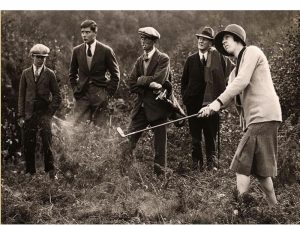Annual Membership Renewal
 Members who have not paid their dues for 2021 are now past due and a $25 late fee will be applied, which will increase to $50 on March 1. USGTF members who wish to remain in good standing and enjoy the benefits of membership, especially the right to identify oneself as a USGTF member and use the logo, are reminded of this most important professional obligation. Other reasons to renew include new card designs (colored to designate level of certification); personal photographs on all cards, and receiving a WGTF card. In addition, being able to take advantage of the new Member Search feature, job opportunities postings and more are available with keeping your membership current. Renew online at www.usgtf.com/renew.
Members who have not paid their dues for 2021 are now past due and a $25 late fee will be applied, which will increase to $50 on March 1. USGTF members who wish to remain in good standing and enjoy the benefits of membership, especially the right to identify oneself as a USGTF member and use the logo, are reminded of this most important professional obligation. Other reasons to renew include new card designs (colored to designate level of certification); personal photographs on all cards, and receiving a WGTF card. In addition, being able to take advantage of the new Member Search feature, job opportunities postings and more are available with keeping your membership current. Renew online at www.usgtf.com/renew.


 In 2003, the Australian Golf Teachers Federation made its appearance at the World Golf Teachers Cup, making a splash among member nations. In 2006, USGTF examiners traveled from the United States to Brisbane to conduct the first Master Golf Teaching Professional certification course in that country. After the retirement of AGTF president Gerry Cooney, the AGTF slowly began dissolving to the point that operations became dormant. However, talks with USGTF member Grant Garrison, who now lives in Australia, have commenced in regards to bringing the AGTF back to life. Garrison is also a PGA of America member who is a strong supporter of the USGTF and wants to revive the AGTF to head up future growth and development of the game in that country. Garrison is an accomplished teacher and experienced in the business of golf, and we look forward to a collaboration that benefits both Australian golf and the WGTF.
In 2003, the Australian Golf Teachers Federation made its appearance at the World Golf Teachers Cup, making a splash among member nations. In 2006, USGTF examiners traveled from the United States to Brisbane to conduct the first Master Golf Teaching Professional certification course in that country. After the retirement of AGTF president Gerry Cooney, the AGTF slowly began dissolving to the point that operations became dormant. However, talks with USGTF member Grant Garrison, who now lives in Australia, have commenced in regards to bringing the AGTF back to life. Garrison is also a PGA of America member who is a strong supporter of the USGTF and wants to revive the AGTF to head up future growth and development of the game in that country. Garrison is an accomplished teacher and experienced in the business of golf, and we look forward to a collaboration that benefits both Australian golf and the WGTF.  Golf has its share of inspirational stories, where players have faced hardship and seemingly impossible odds, only to come back and defy those odds. One such person is PGA Tour player Kevin Na, winner of the recent Sony Open.
Na entered the final round two shots back of third-round leader Brendan Steele. A bogey on #12 damaged his chances, but he then ripped off consecutive birdies the next three holes to forge into the lead, which he never relinquished.
After taking 369 starts to capture his first win, Na now has four victories in his last 55 starts. But during the 2012 Players, Na faced some inner demons on national television. He frequently backed off shots and took forever to pull the trigger. A final-round 76 left him shy of winner Matt Kuchar and a national golf audience wondering just what the heck was going on with Na.
He persevered, gaining an inner resolve and a belief in his game that has led to his current success. Na exemplifies the old sayings of “one step back, two steps forward,” and “it’s not what happens to you; it’s how you respond.” He easily could have quit, but chose the more difficult path. And so far, so good.
Golf has its share of inspirational stories, where players have faced hardship and seemingly impossible odds, only to come back and defy those odds. One such person is PGA Tour player Kevin Na, winner of the recent Sony Open.
Na entered the final round two shots back of third-round leader Brendan Steele. A bogey on #12 damaged his chances, but he then ripped off consecutive birdies the next three holes to forge into the lead, which he never relinquished.
After taking 369 starts to capture his first win, Na now has four victories in his last 55 starts. But during the 2012 Players, Na faced some inner demons on national television. He frequently backed off shots and took forever to pull the trigger. A final-round 76 left him shy of winner Matt Kuchar and a national golf audience wondering just what the heck was going on with Na.
He persevered, gaining an inner resolve and a belief in his game that has led to his current success. Na exemplifies the old sayings of “one step back, two steps forward,” and “it’s not what happens to you; it’s how you respond.” He easily could have quit, but chose the more difficult path. And so far, so good.
 If there is one golfer who epitomizes the word “cool,” it could only be Fred Couples. With a swing as easy and relaxed as his personality, Couples has become somewhat of a cult figure in the world of golf.
After starring at the University of Houston, Couples made his way onto the PGA Tour and won his first event in 1983 in a five-man playoff. He went on to win 14 more times, including the 1992 Masters. On the 12th hole during the final round, Couples hit his tee shot short of the green and the ball started rolling down the bank towards the water. Somehow, the ball came to a stop – something it never does. It was later revealed that the person assigned to mow the bank that morning neglected to do so. His good friend, CBS anchorman Jim Nantz (with whom he roomed at Houston), conducted the emotional post-round interview in the Butler Cabin.
Couples is also unfortunately known for having a balky back, which has resulted in him missing numerous tournaments. When it cooperates, he is still able to compete with the best of them, as his 13 wins on PGA Tour Champions attests.
If there is one golfer who epitomizes the word “cool,” it could only be Fred Couples. With a swing as easy and relaxed as his personality, Couples has become somewhat of a cult figure in the world of golf.
After starring at the University of Houston, Couples made his way onto the PGA Tour and won his first event in 1983 in a five-man playoff. He went on to win 14 more times, including the 1992 Masters. On the 12th hole during the final round, Couples hit his tee shot short of the green and the ball started rolling down the bank towards the water. Somehow, the ball came to a stop – something it never does. It was later revealed that the person assigned to mow the bank that morning neglected to do so. His good friend, CBS anchorman Jim Nantz (with whom he roomed at Houston), conducted the emotional post-round interview in the Butler Cabin.
Couples is also unfortunately known for having a balky back, which has resulted in him missing numerous tournaments. When it cooperates, he is still able to compete with the best of them, as his 13 wins on PGA Tour Champions attests.
 He’s an accomplished player, having won his fair share of tournaments, including the Open division of the 2015 United States Golf Teachers Cup. But WGTF Top 100 Teacher Michael Wolf from Evansville, Indiana, is more renowned for a teaching career that has spanned 34 years. His students have played in every USGA event, and have also earned more than $1 million in college scholarship money. “But one of the things I’m most proud of is that 10 or 12 of my formers students are now teachers themselves,” said Wolf, winner of the 2016 Harvey Penick Trophy for Excellence in Golf Teaching.
He has recently completed a new and unique book titled The Driven Golfer: Building Your Method for Scratch Golf. What makes the book unique, besides the approach of finding the method that works for each individual golfer, is that each chapter is accompanied by a video to be viewed after completing the chapter. There are three hours of accompanying video in addition to the printed words. As for his teaching, Wolf has built a rapport with his students by helping them formulate a clear path to achieving their goals, laying down a program of improvement, and by teaching them why it is important to build their method in a certain way.
The book is 274 pages, and far from being a book strictly for golfers, it can serve as a useful guide for teachers who wish to add a different perspective to their teaching programs. More information can be found at his website,
He’s an accomplished player, having won his fair share of tournaments, including the Open division of the 2015 United States Golf Teachers Cup. But WGTF Top 100 Teacher Michael Wolf from Evansville, Indiana, is more renowned for a teaching career that has spanned 34 years. His students have played in every USGA event, and have also earned more than $1 million in college scholarship money. “But one of the things I’m most proud of is that 10 or 12 of my formers students are now teachers themselves,” said Wolf, winner of the 2016 Harvey Penick Trophy for Excellence in Golf Teaching.
He has recently completed a new and unique book titled The Driven Golfer: Building Your Method for Scratch Golf. What makes the book unique, besides the approach of finding the method that works for each individual golfer, is that each chapter is accompanied by a video to be viewed after completing the chapter. There are three hours of accompanying video in addition to the printed words. As for his teaching, Wolf has built a rapport with his students by helping them formulate a clear path to achieving their goals, laying down a program of improvement, and by teaching them why it is important to build their method in a certain way.
The book is 274 pages, and far from being a book strictly for golfers, it can serve as a useful guide for teachers who wish to add a different perspective to their teaching programs. More information can be found at his website,  Since golf’s inception, women, too, have played the game. As legend goes, in the 16th century Mary, Queen of Scots, was accused of playing golf only a few days after the murder of her husband, Lord Darnley. Pictures of women playing golf at St. Andrews in the 1890s exist, and competitions have been around for nearly as long.
Recently, President Joe Biden has been appointing a number of women to important positions, recognizing their strength and abilities. Golf can and should do a better job of recognizing women’s strengths and abilities, too. Let’s look at golf media, for example, specifically Golf Channel and Golf Digest, the latter the largest golf magazine in terms of circulation. During a one-hour “Golf Central” – the main news show on Golf Channel – there might be 48 minutes of show and 12 minutes of commercials. It is common to see 40 or more minutes spent discussing the PGA Tour and its players. The channel is not called PGA Tour Channel. It’s called Golf Channel, and last time I checked, women’s golf plays tournaments every week, too.
I also subscribe to Golf Digest, and while the magazine is doing a better job of featuring women players and instructors compared to a few years ago, it is also sadly lacking. Now, no one is suggesting Golf Channel or Golf Digest necessarily give women exactly equal time, but there is no doubt they are short-changed. As women continue to gain in buying power and making inroads in all avenues of society, they will become more of a force in golf. Getting ahead of the game and recognizing that fact sooner rather than later will benefit all of us.
Since golf’s inception, women, too, have played the game. As legend goes, in the 16th century Mary, Queen of Scots, was accused of playing golf only a few days after the murder of her husband, Lord Darnley. Pictures of women playing golf at St. Andrews in the 1890s exist, and competitions have been around for nearly as long.
Recently, President Joe Biden has been appointing a number of women to important positions, recognizing their strength and abilities. Golf can and should do a better job of recognizing women’s strengths and abilities, too. Let’s look at golf media, for example, specifically Golf Channel and Golf Digest, the latter the largest golf magazine in terms of circulation. During a one-hour “Golf Central” – the main news show on Golf Channel – there might be 48 minutes of show and 12 minutes of commercials. It is common to see 40 or more minutes spent discussing the PGA Tour and its players. The channel is not called PGA Tour Channel. It’s called Golf Channel, and last time I checked, women’s golf plays tournaments every week, too.
I also subscribe to Golf Digest, and while the magazine is doing a better job of featuring women players and instructors compared to a few years ago, it is also sadly lacking. Now, no one is suggesting Golf Channel or Golf Digest necessarily give women exactly equal time, but there is no doubt they are short-changed. As women continue to gain in buying power and making inroads in all avenues of society, they will become more of a force in golf. Getting ahead of the game and recognizing that fact sooner rather than later will benefit all of us.
 The year 2020 will go down as one of the most unusual, if not the unusual, we will see in our lifetimes. The COVID-19 coronavirus wreaked havoc worldwide, with many countries going into lockdown mode and doing their best to keep people apart.
Life in the United States was no exception as governors everywhere mandated business closures, including golf course facilities, in many states. However, a strange and unexpected thing happened: Most courses that were open saw a dramatic upsurge in rounds played and revenue generated, as people were seeking a safe outdoor activity. Golf fit that bill perfectly, and many golfers who had fallen away from the game returned.
With the great news that highly effective vaccines are being approved, we should return to normal sometime by the middle to late part of the year, according to the experts. This means that the momentum generated from 2020 should be even greater in 2021 for the golf business, especially golf teachers. Teaching professionals everywhere saw their lesson books fill, and we should expect the same for 2021. It is important for the industry to continue to be welcoming to all participants who want to give our great game a go, and the USGTF has always been at the forefront on this regard. And speaking of the USGTF, the United States Golf Teachers Cup will return, along with our regional events.
Stay tuned. It’s going to be a great year!
The year 2020 will go down as one of the most unusual, if not the unusual, we will see in our lifetimes. The COVID-19 coronavirus wreaked havoc worldwide, with many countries going into lockdown mode and doing their best to keep people apart.
Life in the United States was no exception as governors everywhere mandated business closures, including golf course facilities, in many states. However, a strange and unexpected thing happened: Most courses that were open saw a dramatic upsurge in rounds played and revenue generated, as people were seeking a safe outdoor activity. Golf fit that bill perfectly, and many golfers who had fallen away from the game returned.
With the great news that highly effective vaccines are being approved, we should return to normal sometime by the middle to late part of the year, according to the experts. This means that the momentum generated from 2020 should be even greater in 2021 for the golf business, especially golf teachers. Teaching professionals everywhere saw their lesson books fill, and we should expect the same for 2021. It is important for the industry to continue to be welcoming to all participants who want to give our great game a go, and the USGTF has always been at the forefront on this regard. And speaking of the USGTF, the United States Golf Teachers Cup will return, along with our regional events.
Stay tuned. It’s going to be a great year! 